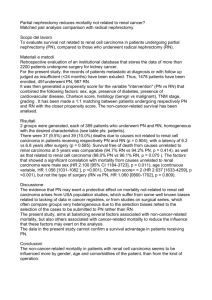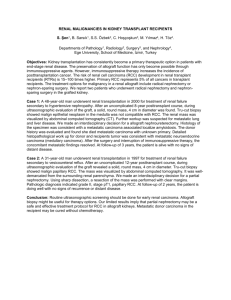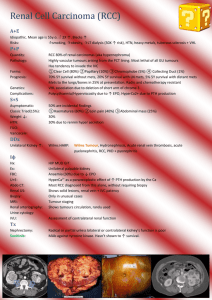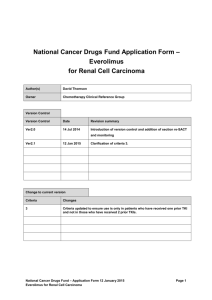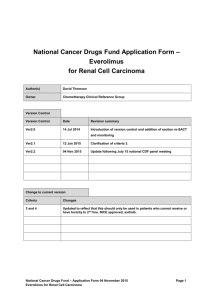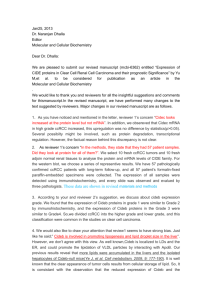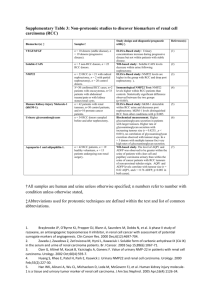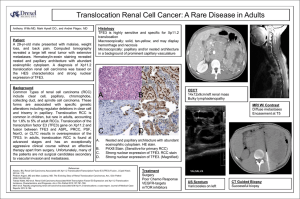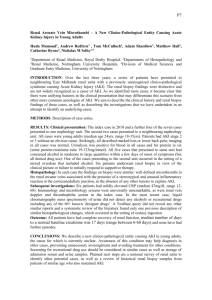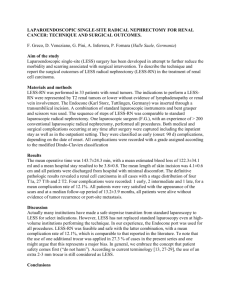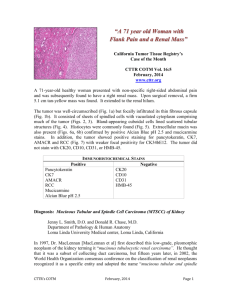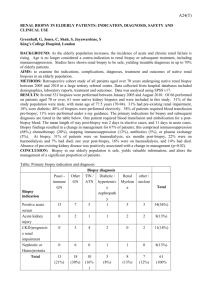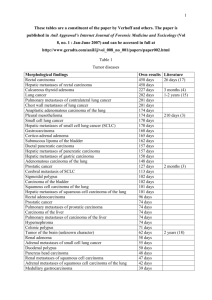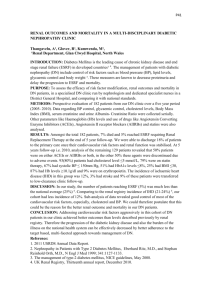SLIDE SEMINAR Surg Path Hand-out - IAP-AD
advertisement
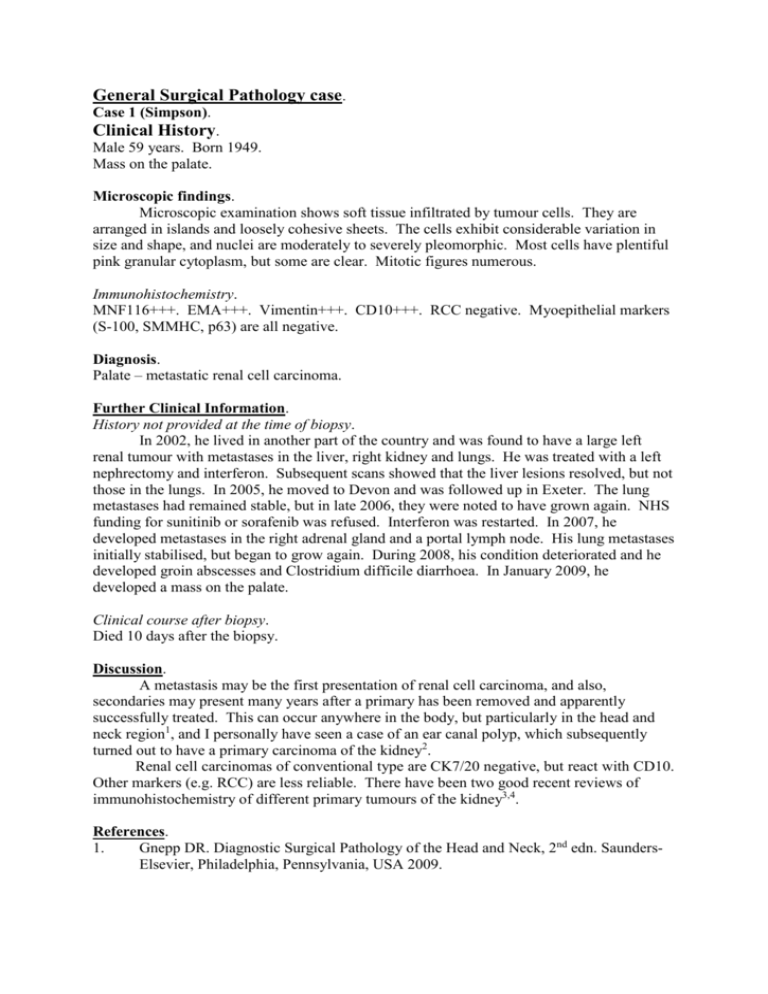
General Surgical Pathology case. Case 1 (Simpson). Clinical History. Male 59 years. Born 1949. Mass on the palate. Microscopic findings. Microscopic examination shows soft tissue infiltrated by tumour cells. They are arranged in islands and loosely cohesive sheets. The cells exhibit considerable variation in size and shape, and nuclei are moderately to severely pleomorphic. Most cells have plentiful pink granular cytoplasm, but some are clear. Mitotic figures numerous. Immunohistochemistry. MNF116+++. EMA+++. Vimentin+++. CD10+++. RCC negative. Myoepithelial markers (S-100, SMMHC, p63) are all negative. Diagnosis. Palate – metastatic renal cell carcinoma. Further Clinical Information. History not provided at the time of biopsy. In 2002, he lived in another part of the country and was found to have a large left renal tumour with metastases in the liver, right kidney and lungs. He was treated with a left nephrectomy and interferon. Subsequent scans showed that the liver lesions resolved, but not those in the lungs. In 2005, he moved to Devon and was followed up in Exeter. The lung metastases had remained stable, but in late 2006, they were noted to have grown again. NHS funding for sunitinib or sorafenib was refused. Interferon was restarted. In 2007, he developed metastases in the right adrenal gland and a portal lymph node. His lung metastases initially stabilised, but began to grow again. During 2008, his condition deteriorated and he developed groin abscesses and Clostridium difficile diarrhoea. In January 2009, he developed a mass on the palate. Clinical course after biopsy. Died 10 days after the biopsy. Discussion. A metastasis may be the first presentation of renal cell carcinoma, and also, secondaries may present many years after a primary has been removed and apparently successfully treated. This can occur anywhere in the body, but particularly in the head and neck region1, and I personally have seen a case of an ear canal polyp, which subsequently turned out to have a primary carcinoma of the kidney2. Renal cell carcinomas of conventional type are CK7/20 negative, but react with CD10. Other markers (e.g. RCC) are less reliable. There have been two good recent reviews of immunohistochemistry of different primary tumours of the kidney3,4. References. 1. Gnepp DR. Diagnostic Surgical Pathology of the Head and Neck, 2nd edn. SaundersElsevier, Philadelphia, Pennsylvania, USA 2009. 2. Ingelaere PPC, Simpson RHW, Garth RJN. Metastatic renal cell carcinoma presenting as an aural polyp. Journal of Laryngology and Otology 1997; 111: 1066-1068. 3. Pan C-C, Chen PC-H, Ho DM-T. The diagnostic utility of MOC31, BerEP4, RCC marker and CD10 in the classification of renal cell carcinoma and oncocytoma: an immunohistochemical analysis of 328 cases. Histopathology 2004; 45: 452-459. 4. Allory Y, Bazille C, Vieillefond A, Molinié V, Cochand-Priollet B, Cussenot O, Callard P, Sibony M. Profiling and classification tree applied to renal epithelial tumours. Histopathology 2008; 52: 158-166.
